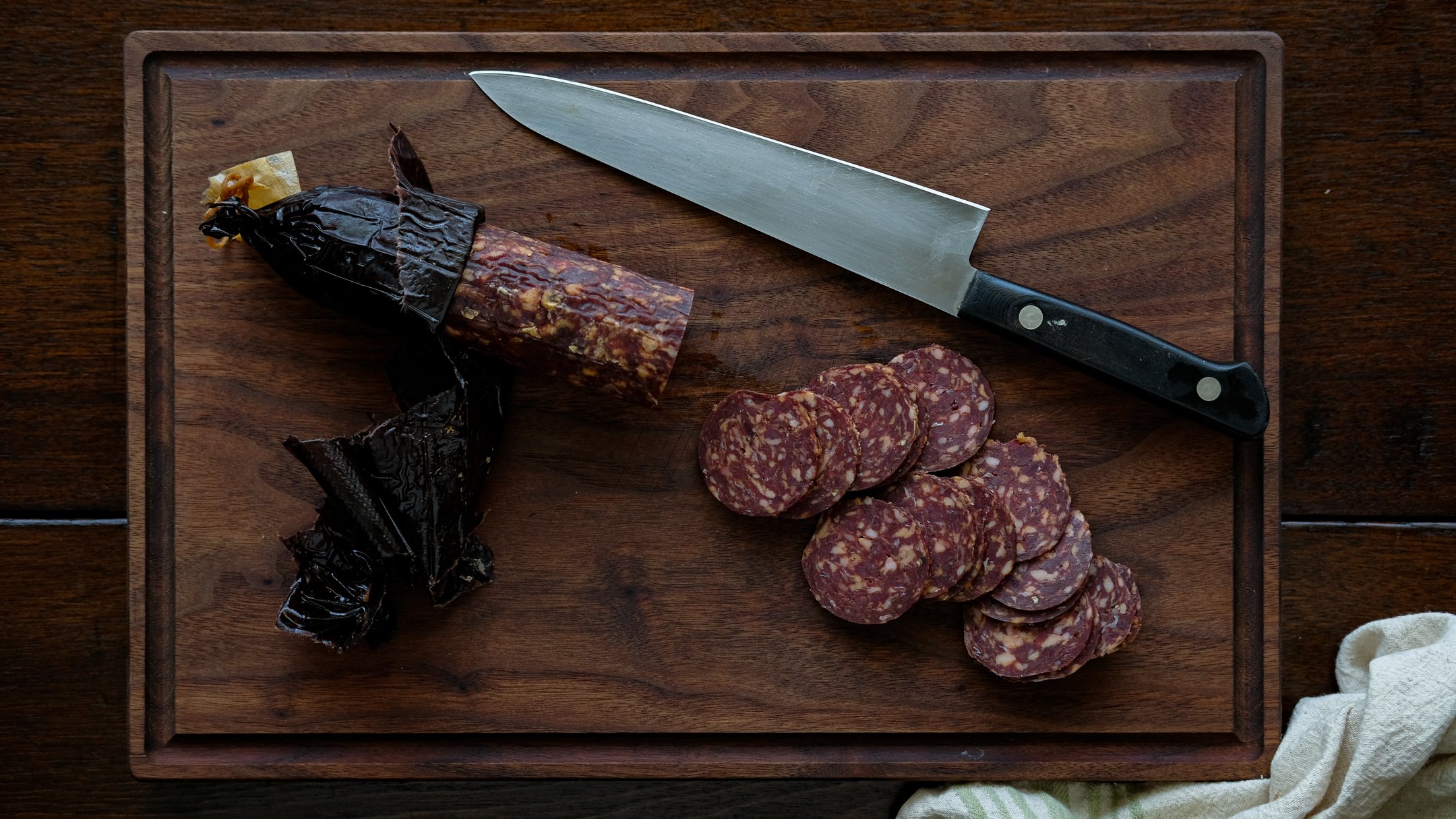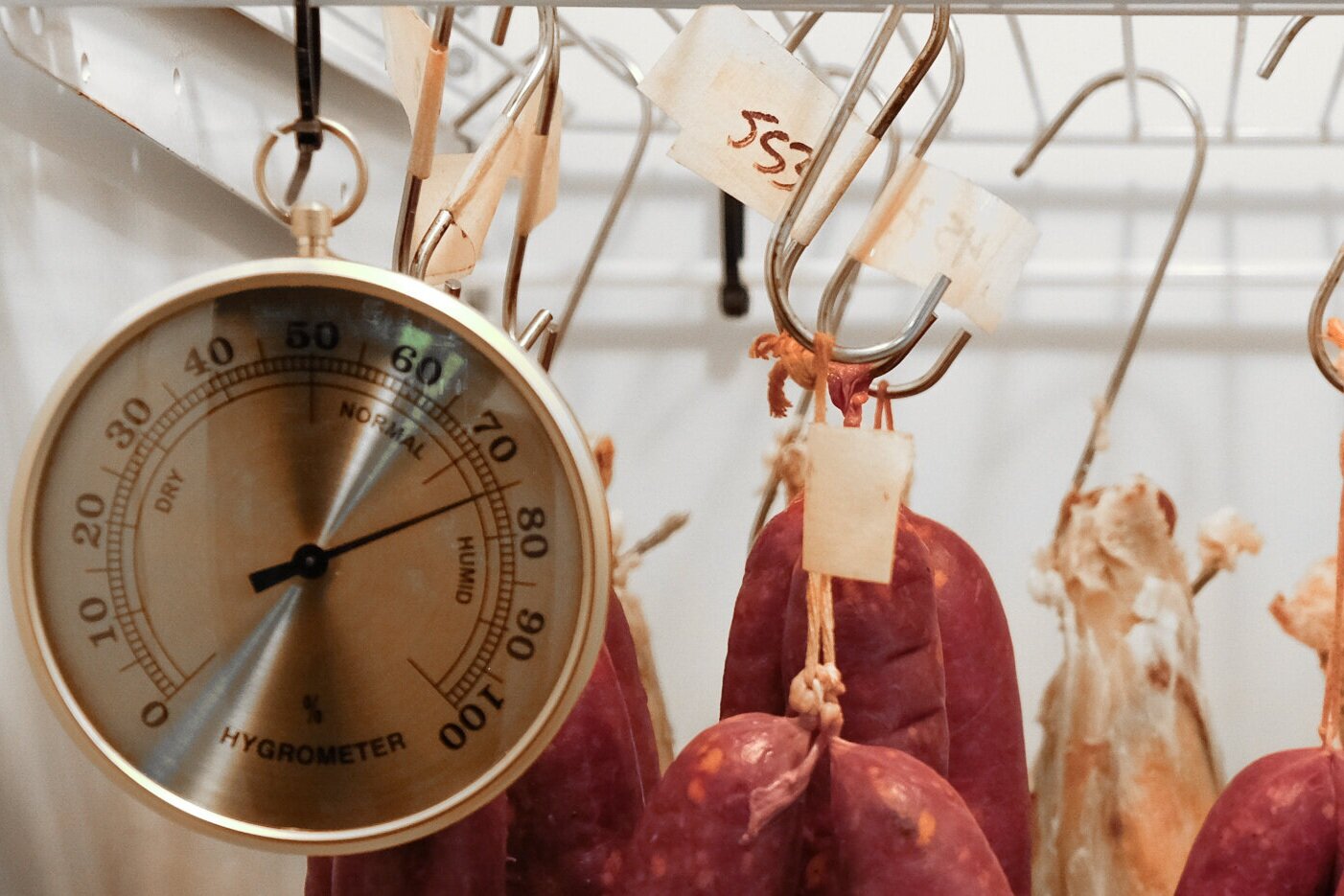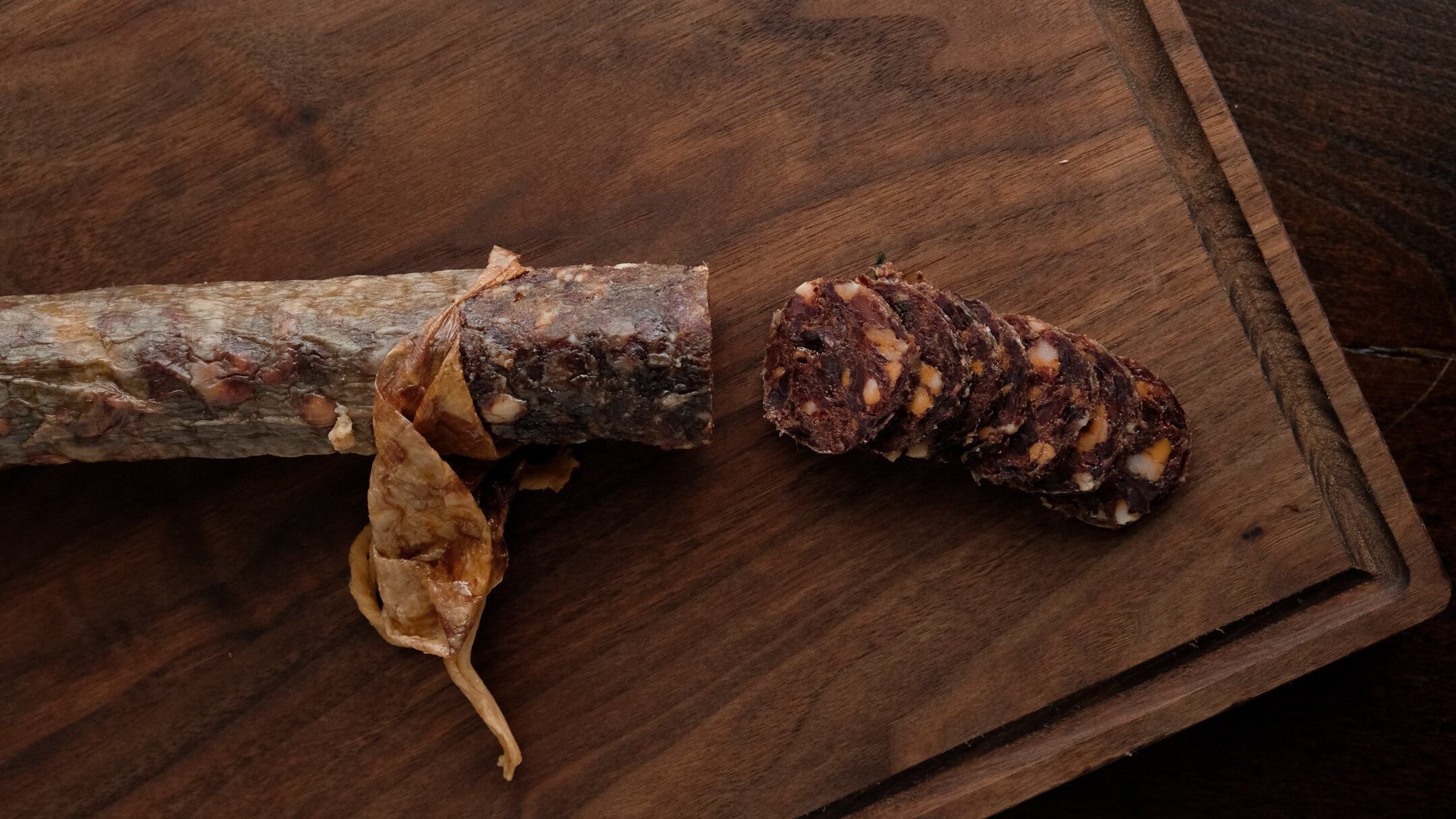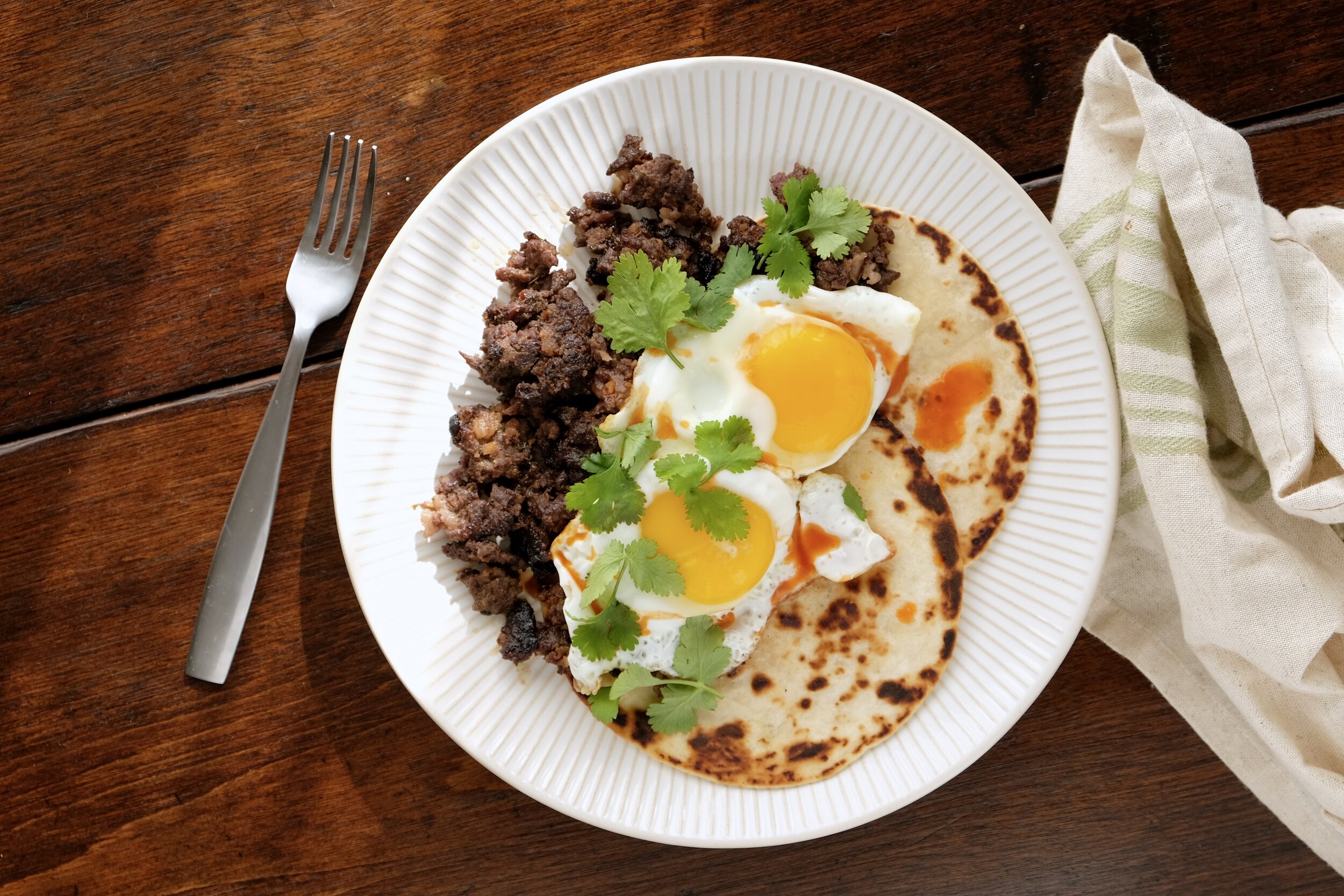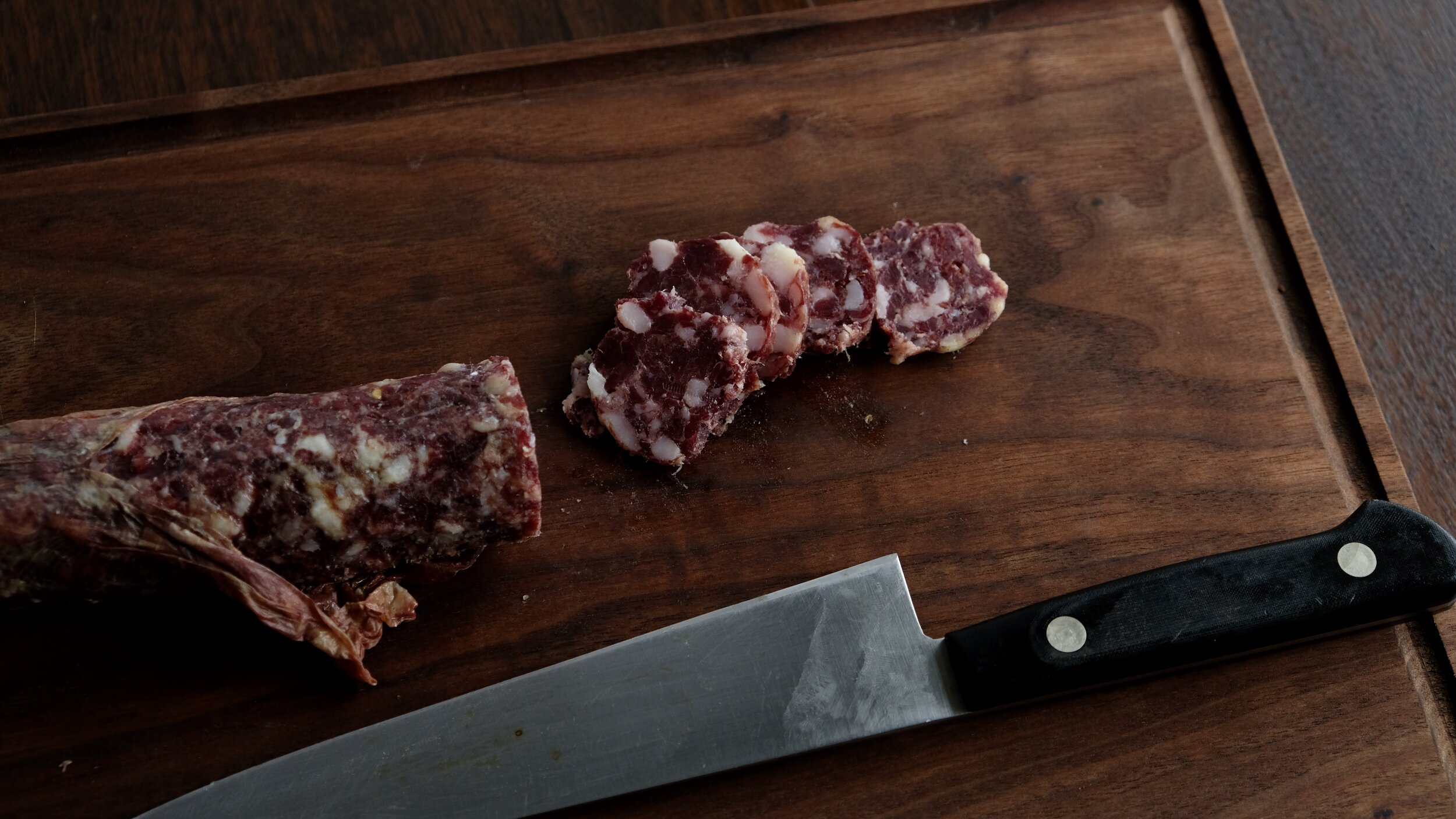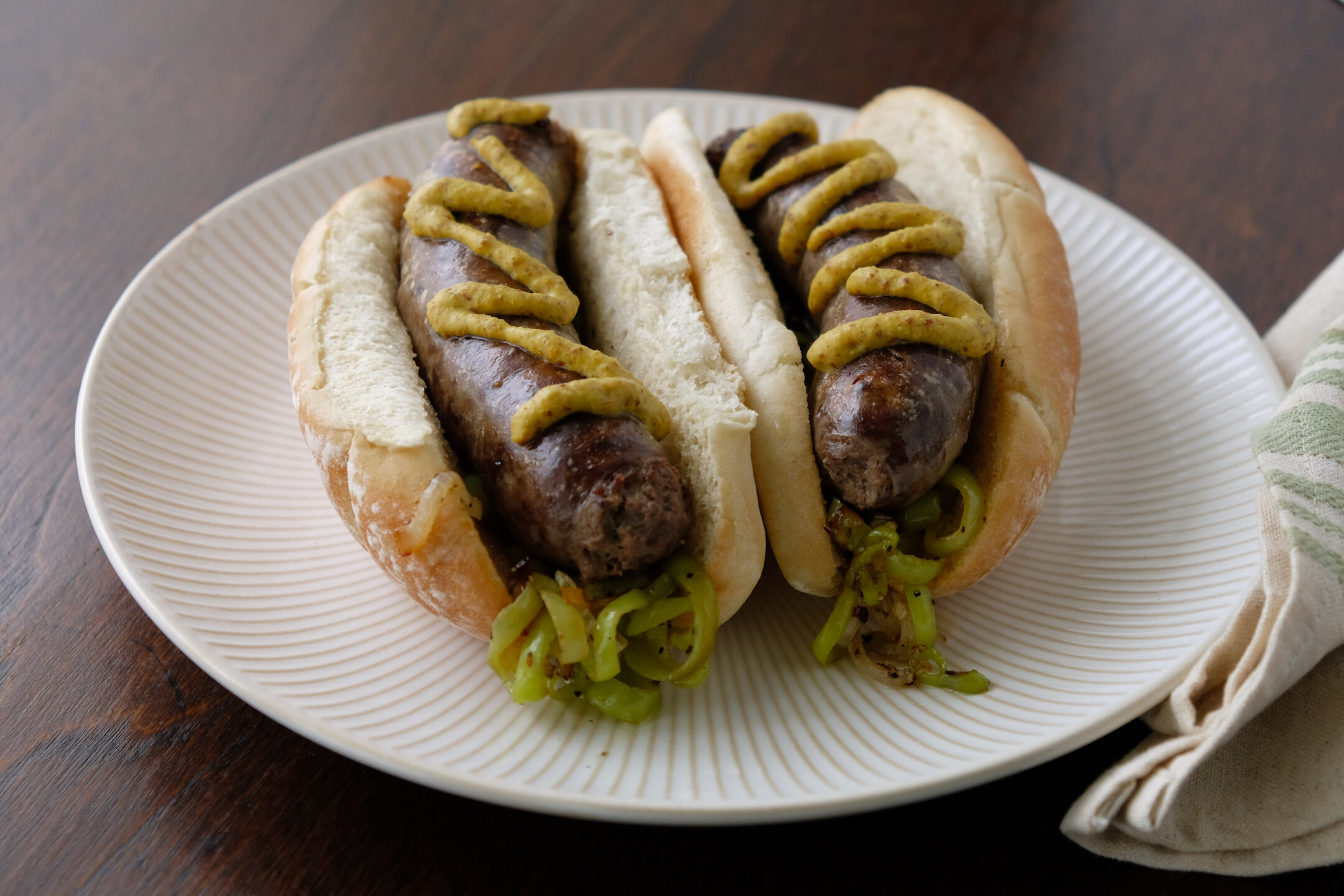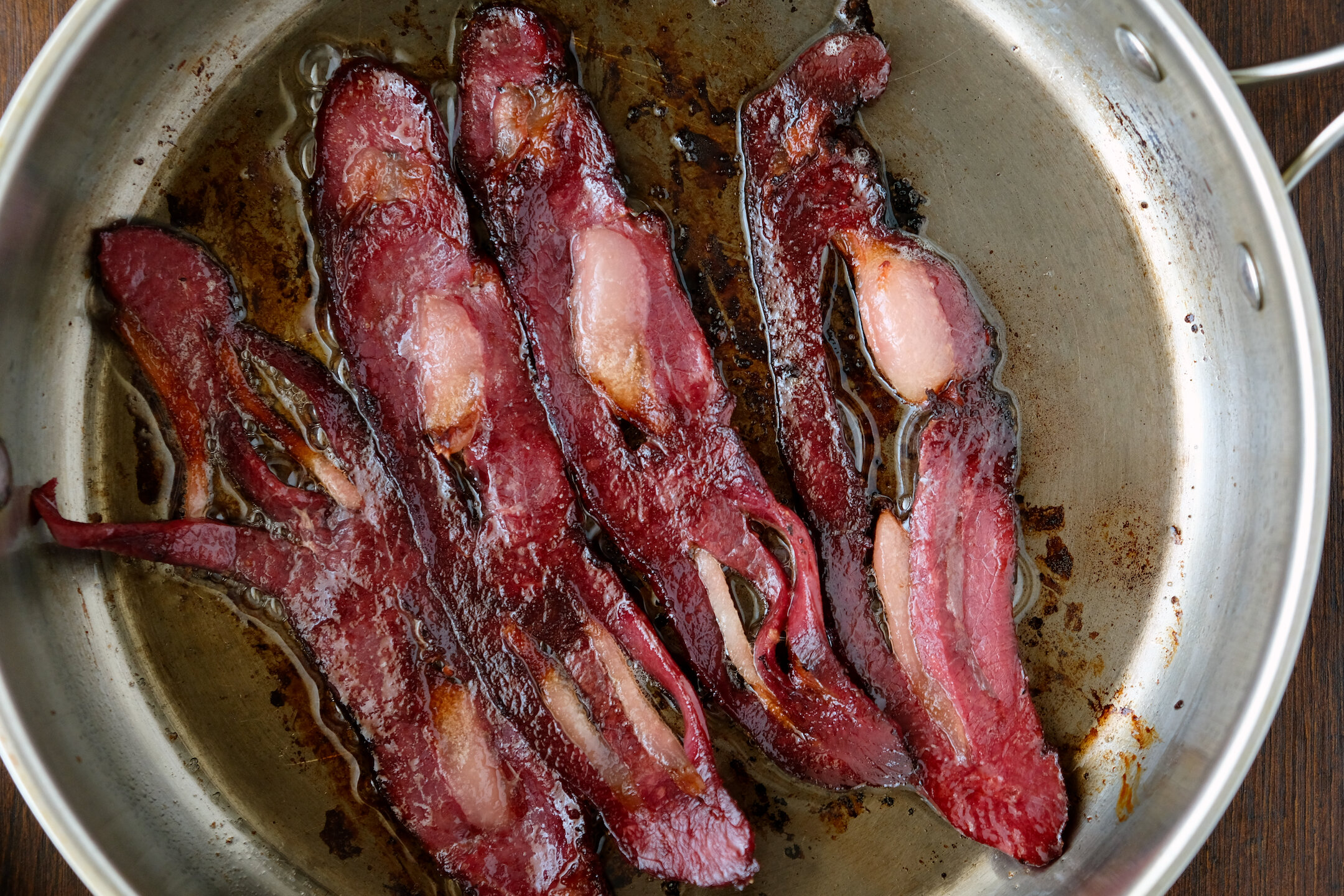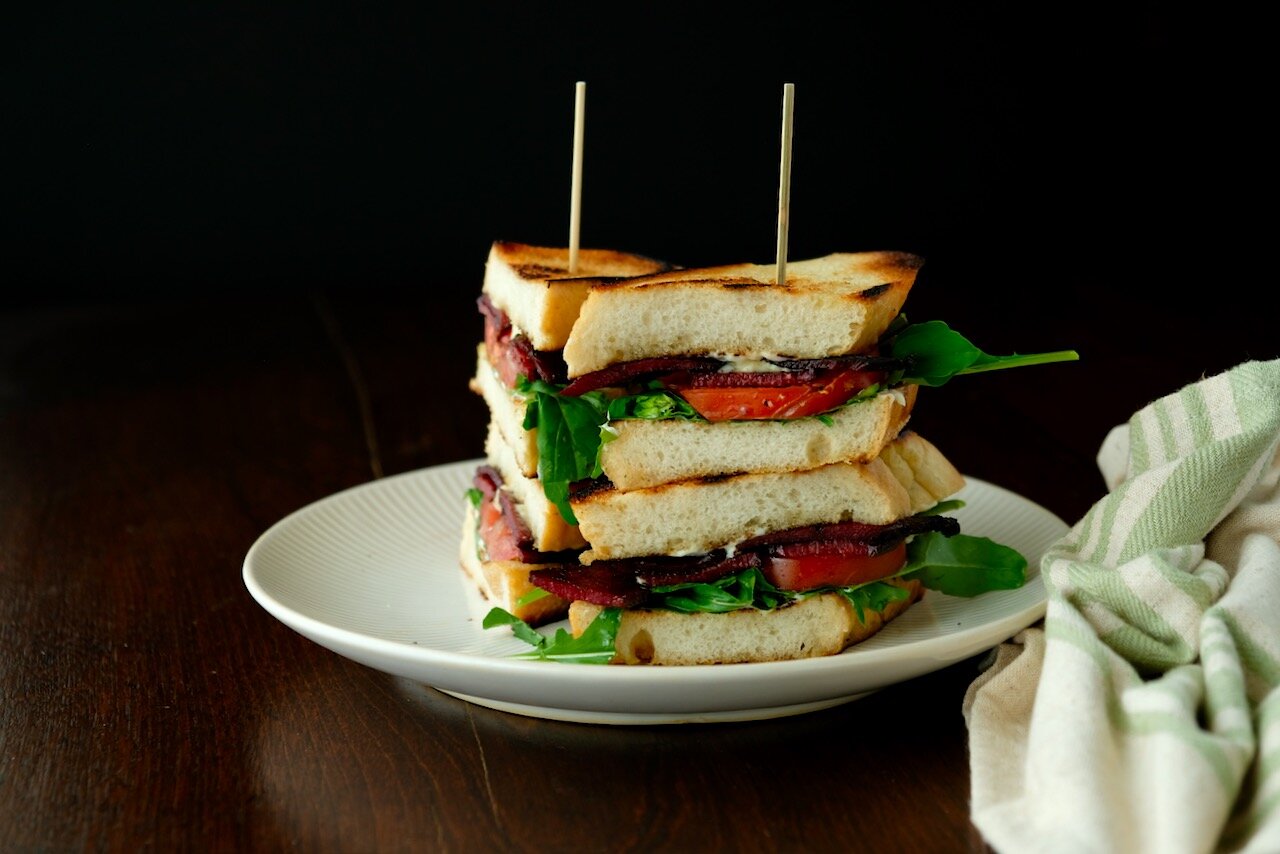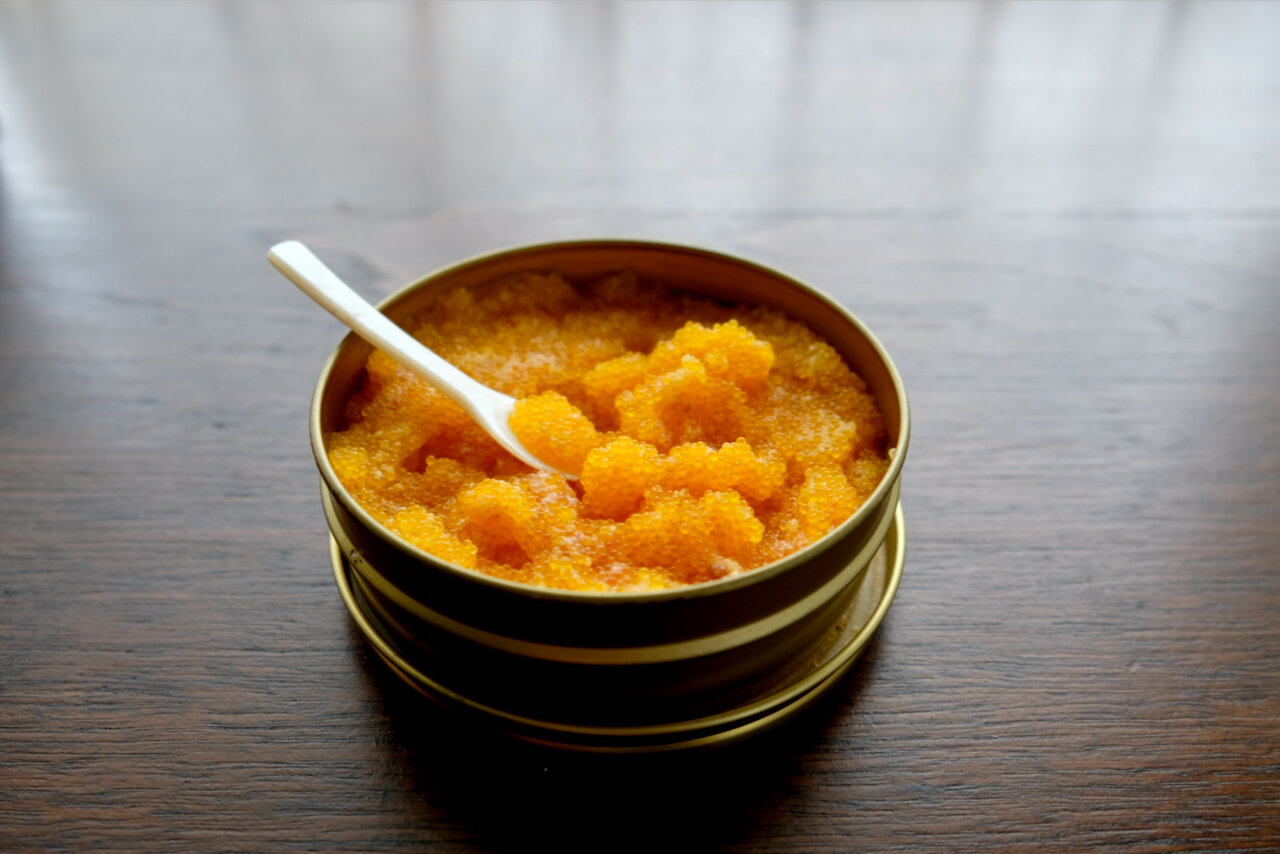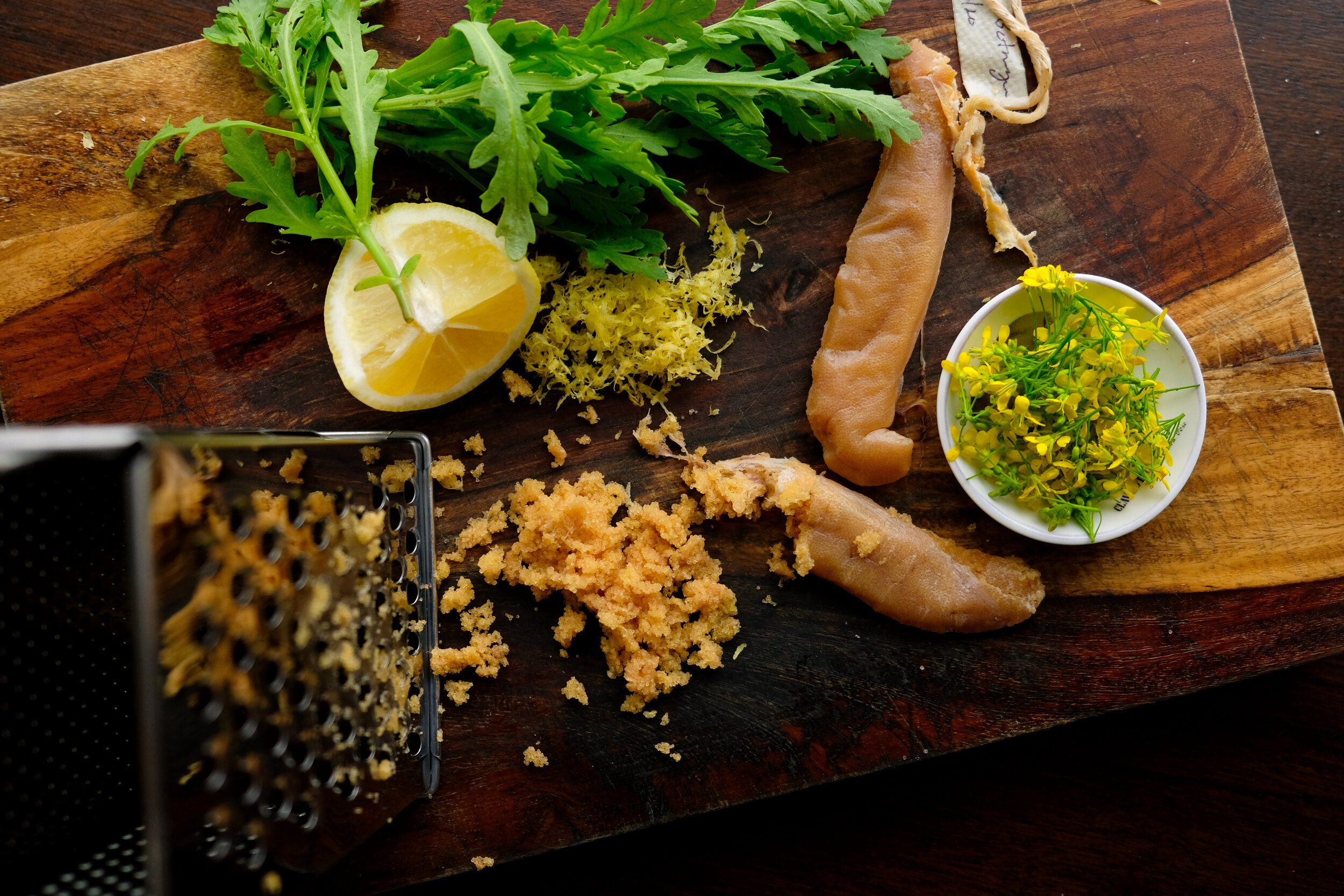Venison Landjager
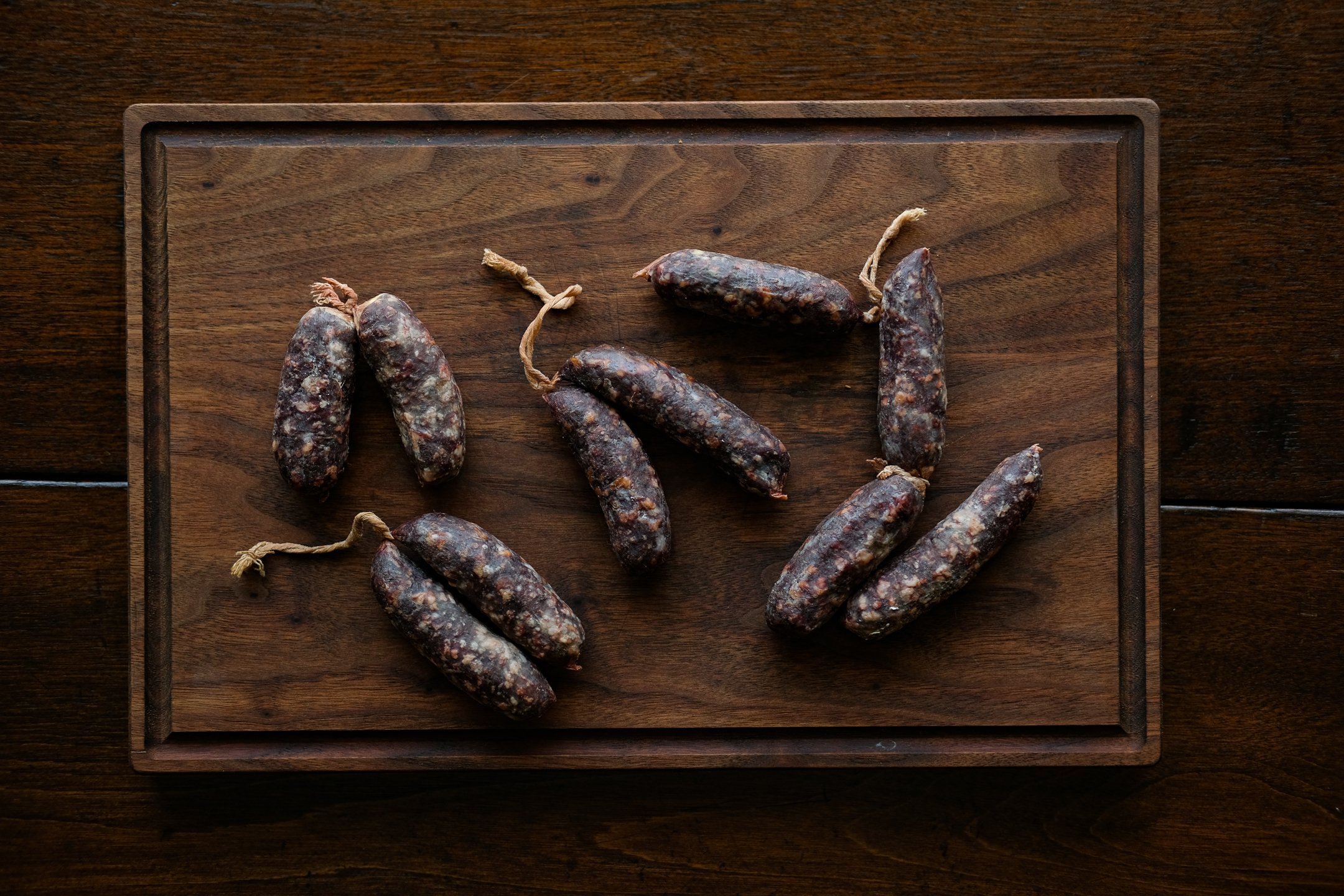
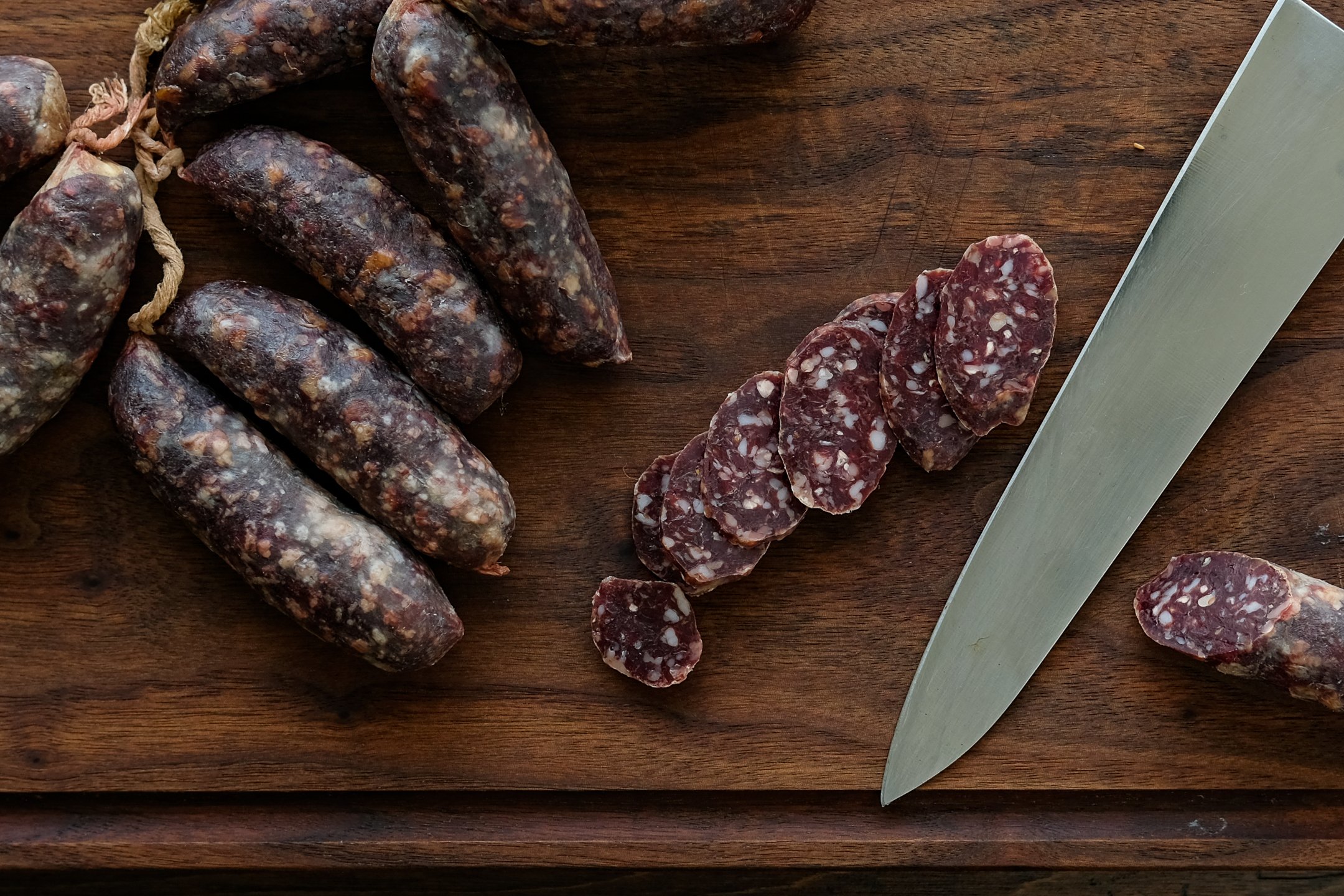
The first time I ever saw landjager, it was on display under a glass cloche at a fancy new grocery store that had just opened in town. The name and square shape of the links caught my eye, but I had never heard of it before. I bought a few links and Rachel and I tried one on the ride home.
The landjager was dense, smokey and delicious. It tasted a little like a slim jim, but for Germans who ran around chasing animals wearing snowshoes, not roided up guys wearing tasseled neon t-shirts. We packed the remaining links in our duck bag and snacked on them over the next few hunts that season.
It's been a few years since we first tried landjager, but we’ve wanted to make it ever since. This season, we finally got around to it. We worked the recipe around venison and kept the fat minimal. This is also the first dry cured sausage we’ve made that goes through a cold smoke stage before going into the curing chamber. The smokey flavor gives these mini salamis a distinct flavor, and they are also dried a little longer than other salamis to aid in stability. We haven’t tested to see how long they will last unrefrigerated, but I’d guess that in cool conditions these would last weeks or months.
The process for making landjager is similar to all our other salamis- the curing salt is necessary, as is the starter culture. One step that we omitted was the traditional pressing of the sausages to form them into square links. We might build a mold for the next batch just because they look so cool when they’ve been pressed, but it doesn't really affect the taste of this salami in any way.
Make a bunch of these- they might be the best protein packed, hiking, hunting, splitting firewood, high output on a cold day, snack ever.
Venison Landjager Recipe
As always, we use metric measurements and go by percentage weight for our sausage recipes. We do this to make the recipes easy to scale and replicate exactly, batch after batch. If you’re thinking of getting into sausage making and don’t own a kitchen scale, please do yourself the favor of buying one. They’re inexpensive relative to the cash outlay of all the other equipment you’ll need to pick up, and will save you a lot of effort in terms of scaling recipes into imperial measurements. To measure your ingredients, first weigh the meat you are using, and then calculate the weight of all the other ingredients based on the weight of the meat.

Ingredients:
Venison, cubed
10% pork fat, cubed
2.75% salt
0.3% cure #2
0.8% dextrose
0.15% garlic powder
0.25% caraway seed
0.5% black pepper, ground coarse
0.15% coriander seed, toasted crushed
Bactoferm F-RM-52
distilled water
Method:
Weigh the venison (in grams) that you will be using to make the sausage. Use this weight to calculate the amount of each ingredient you will be using. For example, if you are starting with 1000 g of cubed venison, you will need 100 g of pork fat, and so on.
Cube the venison and pork fat, and measure your spices accordingly. Mix all ingredients except water and bactoferm, cover and refrigerate overnight.
Reactivate bactoferm as directed on the package. Set aside.
Grind meat and spice mixture through the fine die. Using the paddle attachment on a stand mixer on a low setting (or a wooden spoon), mix meat until well incorporated and then mix in the reactivated bactoferm. Mix for 1-2 minutes until the meat is tacky.
Stuff into hog casings, twist into 6” links.
Incubate for 18-24 hours at ~85F temp and 85%+ humidity.
Cold smoke (sub 100F) for 3-4 hours.
Hang sausages in a curing chamber until mostly dry. The sausage should be very firm. ~50% weight loss.






